|
Getting your Trinity Audio player ready...
|
Record numbers for the New York Times, Facebook’s 15th Birthday, Spotify’s podcasting punt and brands go all in for digital video.
This is the sixth in our monthly series highlighting the key research and earnings data from the past month. Here’s 10 findings from February 2019 which caught our eye:
1: Facebook turned 15
The world’s biggest social network, which launched as Thefacebook in February 2004, was initially only available for students at Harvard University, before rapidly expanding into the global behemoth it is today.
At the end of last year, the service had 1.52 billion daily active users and 2.32 billion monthly active users. It employs 35,587 people around the world.
“Mobile advertising revenue represented approximately 93% of advertising revenue,” the company said In their latest quarterly (Q4 2018) earnings report.
More widely, “around 2.7 billion people now use Facebook, Instagram, WhatsApp, or Messenger (our “Family” of services) each month, and more than 2 billion people use at least one of our Family of services every day on average.”
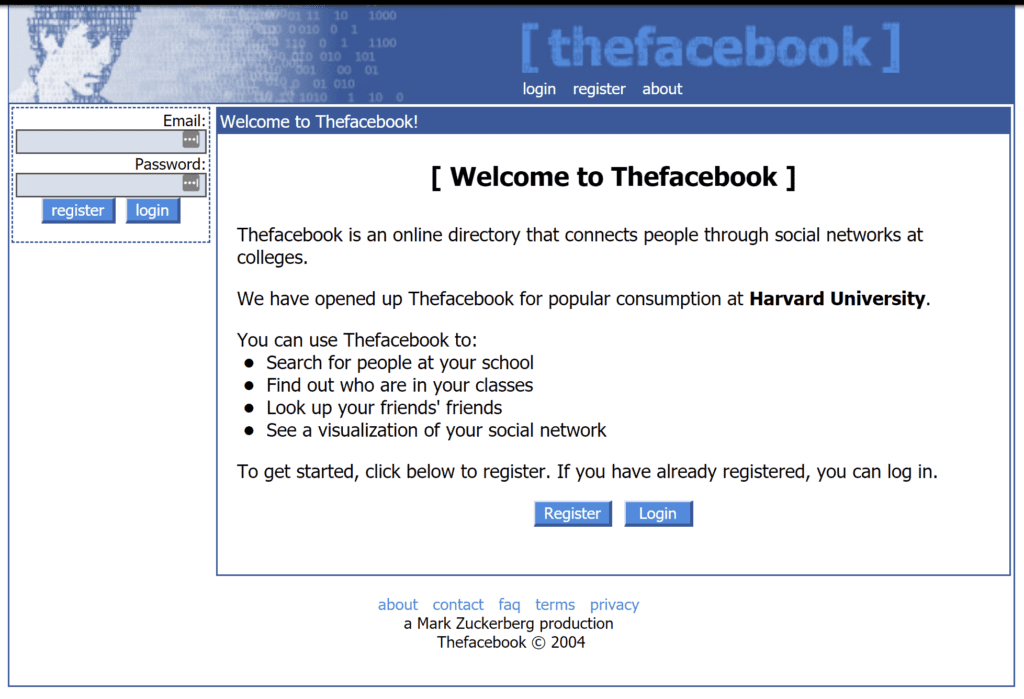
2: To stop fake news, WhatsApp is deleting 2 million accounts a month
The past year has seen considerable concern about the role that WhatsApp can play in spreading fake news.
As the Washington Post recently noted, the service shaped Nigeria’s recent elections, and it has also had a major impact in elections held in both Brazil and India.
“On WhatsApp, fake news is fast — and can be fatal,” the Post previously observed. In India, the biggest market for the Facebook owned messaging network, where the service has 200 million users, at least 25 people died last summer in lynchings provoked by false rumours spread on the app.
To combat this, in India teams have begun to deliver roadshows across the sub-continent, and launched a primetime TV advertising campaign (“Share joy, not rumours”). Worldwide, the number of times a message can be forwarded has been reduced from 20 to five.
Furthermore, the service is also actively deleting 2 million accounts per month globally. The move is “part of an effort to blunt the use of the world’s most popular messaging app to spread fake news and misinformation,” the Guardian reported.
3: UK Children spend more than two hours a day online
New research by Ofcom, the UK communications regulator, found that “children in the UK (aged 5 to 15) now spend around 20 minutes more online per day than they do in front of a TV set – just over two hours online, and a little under two hours watching TV.”
YouTube is a primary driver in this shift. Four in five children use YouTube, and among children who watch both YouTube videos and programmes on a TV set, the streaming service trumps conventional TV.
In the UK, 49% of children aged 8-11 and 12-15 indicated that they prefer watching YouTube videos to programmes on TV. Just over a third get the same enjoyment from both viewing experiences.

Separately, seven in ten older children (71%) said they are allowed to take their mobile phone to bed, as do the 31% of 12-15 year olds who own a tablet.
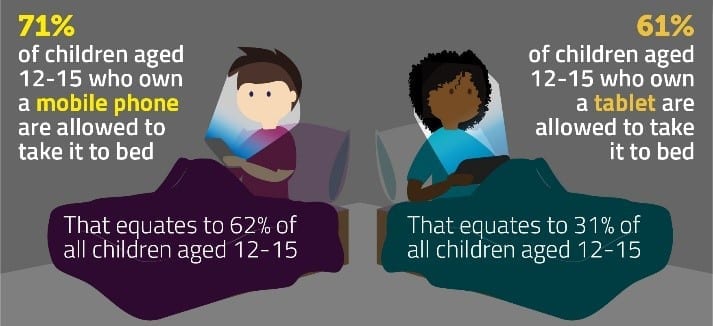
4: Apple News hits 85 million readers
“In the U.S., the latest data from Comscore shows Apple News has the largest audience of all news apps,” Tim Cook told investors in a recent conference call.
Although only available in the United States, the United Kingdom and Australia, the service will be launching in bilingual form in Canada during Q1 2019.
The Wall Street Journal (paywall) wrote that the company’s “plan to create a subscription service for news is running into resistance from major publishers over the tech giant’s proposed financial terms.” According to the Journal, “Apple plans to keep about 50% of subscription revenue from ‘Netflix for news’ service,” and the company appears to be unwilling to share customer data with publishers.
Axios revealed that “Apple is set to debut a news subscription business at a March 25 media event,” part of move to develop their service business and reduce reliance on iPhone sales.
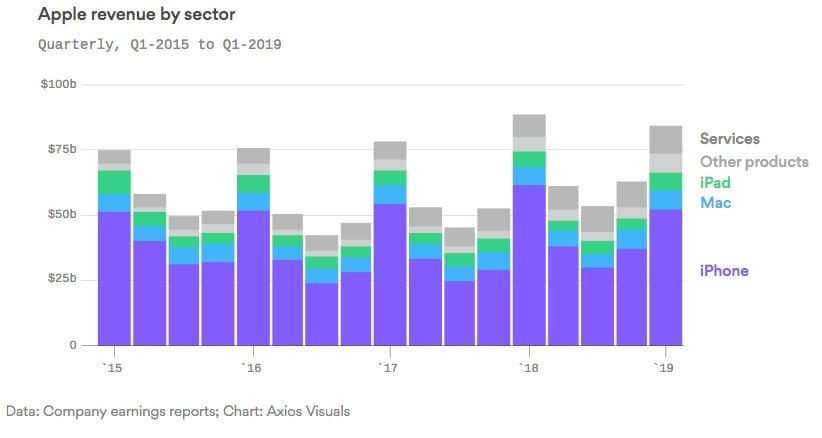
5: US businesses investing in video, skeptical about stories
The State of Social 2019 survey, produced by Buffer in partnership with Social Chain (described in their Twitter bio as “a global, social-first marketing agency”), offered insights from 1,842 US marketing professionals in a range of industries.
Notable findings from the study included a relative skepticism about stories, lack of engagement with messaging apps, and a widespread push – by all brands – to video.
“Just 14.5 percent of businesses don’t publish any video content, the report noted, “down from 25 percent in our 2018 survey.” Facebook is the most popular channel for businesses to share video to (81%), followed by YouTube (62%), and Instagram (57%).
LinkedIn “could be a channel to watch in 2019,” the authors suggest, “with early data showing that videos on LinkedIn are getting shared 20+ times more than any other content.”
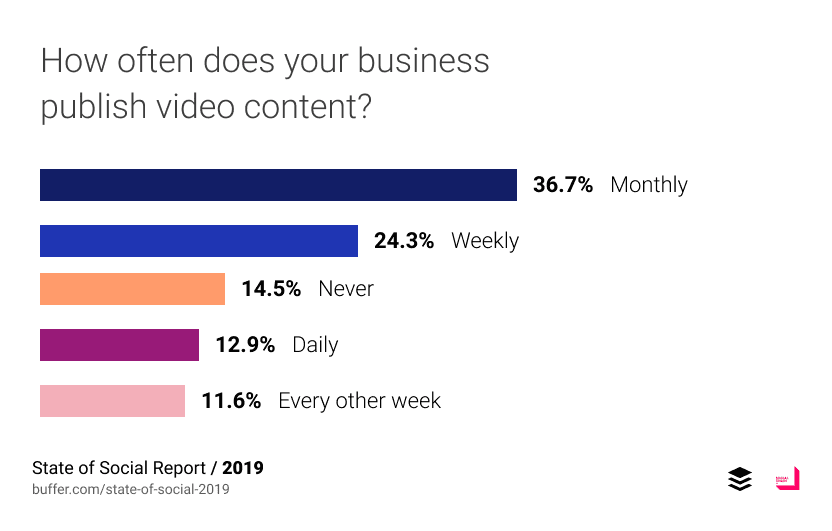
In terms of less established formats, almost three-quarters of brands (71%) do not use messaging apps for marketing, and 57% of respondents indicated that the stories format had been a “Somewhat effective” or “Very effective” tool.
Nonetheless, although nearly two-thirds (62%) of survey respondents indicated they had yet to invest in stories ads, 61% indicated that they planned to do so in the year ahead.
6: Spotify buys Gimlet Media and Anchor for $340 million
We may disagree on the exact amount ($337 million writes to Variety, $343 million says Music Business Worldwide) but, either way, it’s clear that Spotify paid a lot of money last month to get some more skin in the podcasting game.
Commenting on the move, Stratechery’s Ben Thompson, observed: “Spotify is still a distant second to Apple in podcasts, but they are growing fast. Just as importantly, Spotify already has a strongly growing advertising business — again, larger than the entire podcast market — that it can extend to podcasts.”
“With the world focused on trying to reduce screen time, it opens up a massive audio opportunity,” Daniel Ek, Founder and CEO of Spotify, reasoned in a blog post. ”We believe it is a safe assumption that, over time, more than 20% of all Spotify listening will be non-music content.”
In their Q4 2018 letter to shareholders, published around the same time as the purchases, the company noted that more than 10,000 podcasters are using their Spotify for Podcasters platform. Launched in beta on October 3, 2018, the product offers detailed analytics for publishers. “Today, there are more than 185,000 podcast titles available on our platform, and consumption continues to grow rapidly,” the letter stated.
It’s too early to see what the impact of this acquisition will be, but Ek promises that,
“Just as we’ve done with music, our work in podcasting will focus intensively on the curation and customization that users have come to expect from Spotify. We will offer better discovery, data, and monetization to creators.”
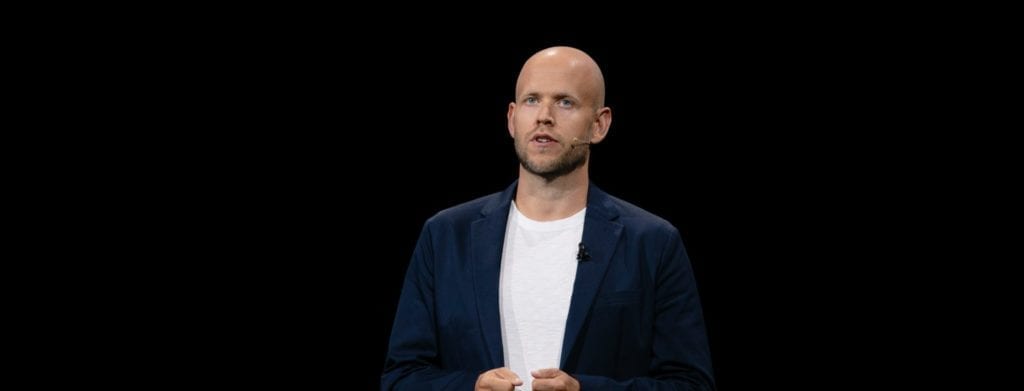
7: More than 2,000 job losses at some of digital journalism’s biggest titles
Spotify’s purchase – and enthusiasm for the future of digital audio – was in marked contrast with the wider digital backdrop, a world which has seen considerable job losses in the past few months.
Highlighting losses at outlets such as Vice, BuzzFeed and The Pool, Columbia University’s Emily Bell wrote in the Guardian that “the primary mistake most digital publishers made was to imagine that platform companies, and particularly Google and Facebook, had any serious interest in helping them sustain their businesses,”.
“The amount of data large platform companies collect and control enables them to offer far more efficient advertising than any publisher, and the business of making online content profitable is rigged against anyone who wants to run even a sparsely resourced newsroom with experienced reporters,” she added.
8: Washington Post drops estimated $5-10 million for Super Bowl advert
During what is typically the most-watched television event in America, the Super Bowl, the Washington Post aired a one-minute advert highlighting the importance of journalism.
Slate argued, that the 60-second spot (narrated by Hollywood superstar Tom Hanks) was “an ad for an idea—that reporting is vital, brave work—which seems like conventional wisdom to us, but isn’t widely shared.”
We don’t know how much the Post paid for this slice of primetime. However, with CNBC reporting that host network, CBS, was charging $5.25 million for a 30-second spot (“roughly $175,000 per second”) it’s no surprise that there was some pushback – including from the WaPo’s own journalists – about whether this was an appropriate use of money.
Interestingly, according to Emily Smith, the Editor of Page Six, the Post’s advert was a last minute replacement for a spot Bezos had already purchased. “Jeff Bezos pulled the plug on a $20 million Super Bowl ad for his spaceflight company, Blue Origin, after it was revealed his mistress had helped shoot footage for the commercial…”
9: Knight Foundation commits $300 million to journalism and local news
The Knight Foundation announced it will double its investment to strengthening journalism in the United States, committing $300 million over the next five years, with a key focus on supporting local news and information.
Initial investments are in scalable organizations focused on “building new business models, strengthening investigative reporting, protecting press freedom, promoting news literacy, and connecting with audiences through civic engagement and technology.”
“We’re not funding one-offs. We’re helping to rebuild a local news ecosystem, reliable and sustainable, and we’re doing it in a way that anyone who cares can participate,” said Alberto Ibargüen, Knight Foundation president, in a press release.
“Without revenue, you can’t pay reporters. Without reporters, you can’t develop consistently reliable news reports about what’s happening in your town. Without that reliable news report, you can’t figure out how to run local government. It isn’t rocket science,”
Projects supported by this first tranche of funding include: the newly launched American Journalism Project ($20 million), Knight-Lenfest Local News Transformation Fund ($10 million), ProPublica ($5 million), Report for America ($5 million) and the Reporters Committee for Freedom of the Press ($10 million).
The latter “will triple the number of lawyers working on local issues and expand its network of local attorneys providing pro bono legal support.”
10: Digital advertising surpasses print advertising for the first time at NYT
The digital transition at the New York Times continues apace, with digital advertising at the Gray Lady overtaking print advertising for the first time in the fourth quarter of 2018. Digital ad revenues increased by 23% to $103 million, while print advertising fell 10% to$88 million.
With 265,000 new digital subscribers also added in the fourth quarter, this represented “the biggest jump [in subscribers] since the so-called Trump bump after the 2016 election.”
The total number of paid subscriptions at the NYT for digital and print is now 4.3 million, an all time high.
In a statement announcing the company’s fourth-quarter financial results, Mark Thompson, the chief executive, remarked:
“We ended 2018 with $709 million in total digital revenue. This means that after just three years, we are already three quarters of the way to achieving our five-year goal of doubling digital revenue to $800 million by 2020. As a result we are setting ourselves a new goal – to grow our subscription business to more than 10 million subscriptions by 2025.”


